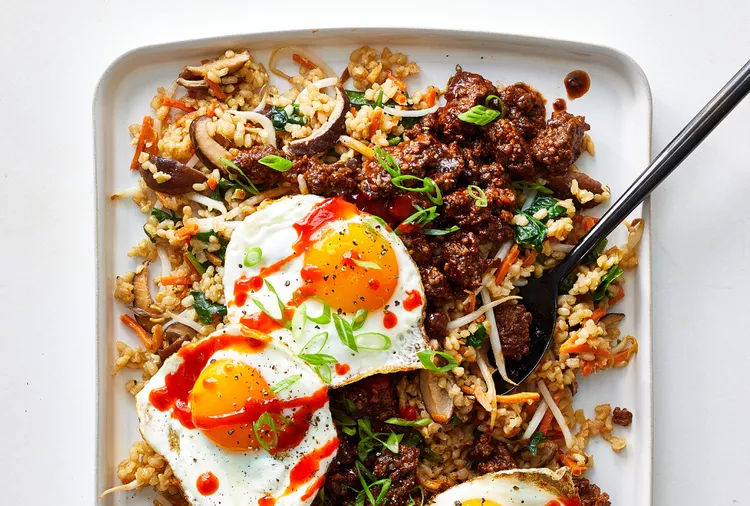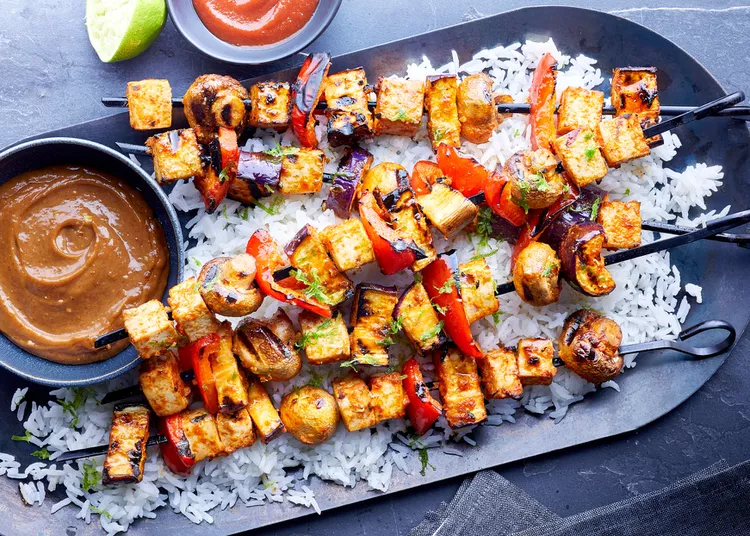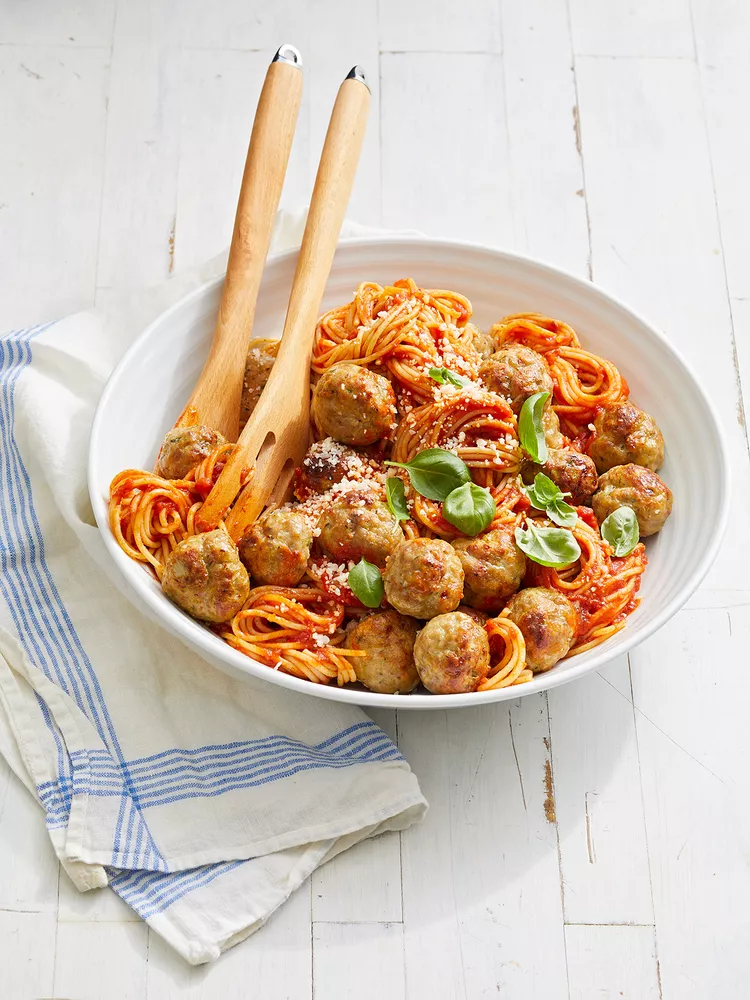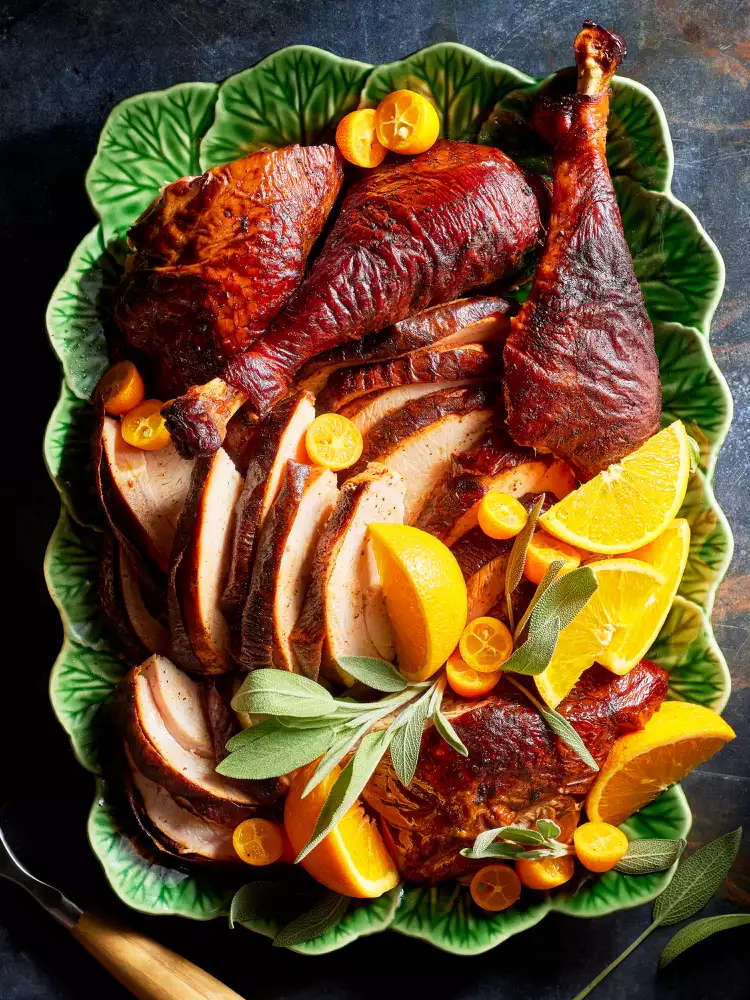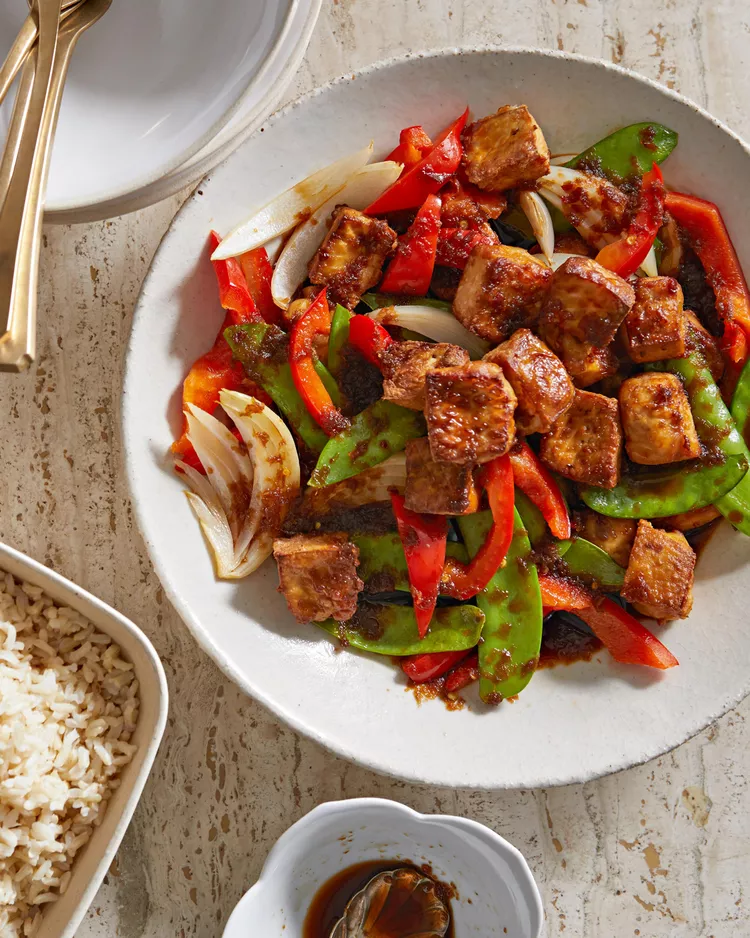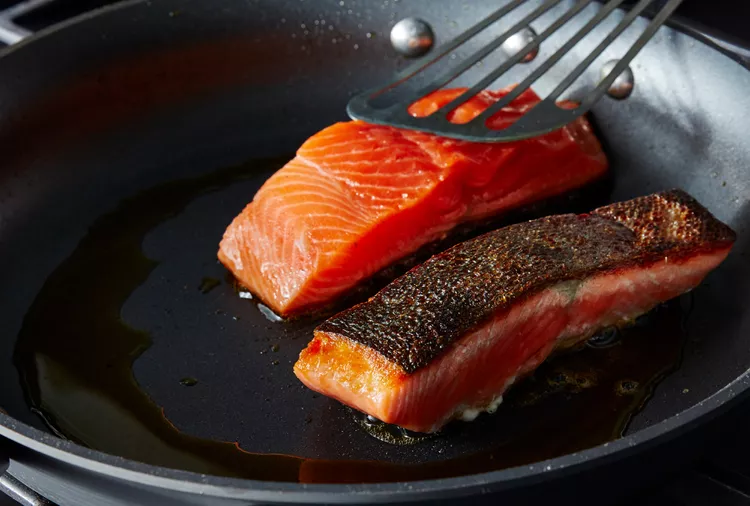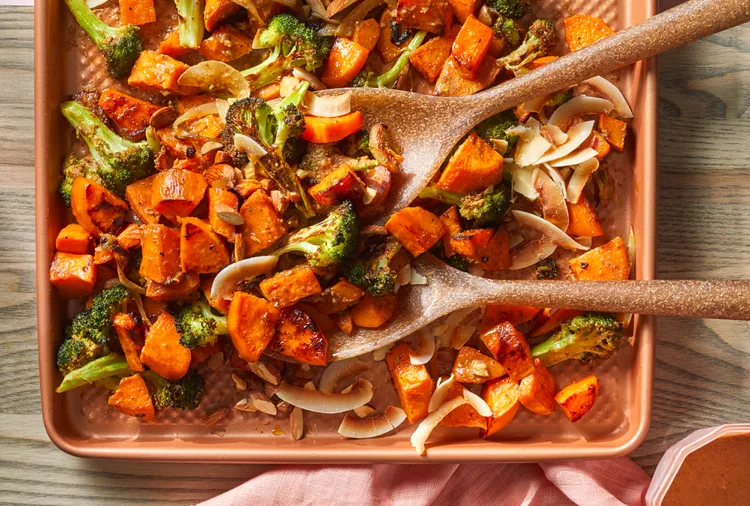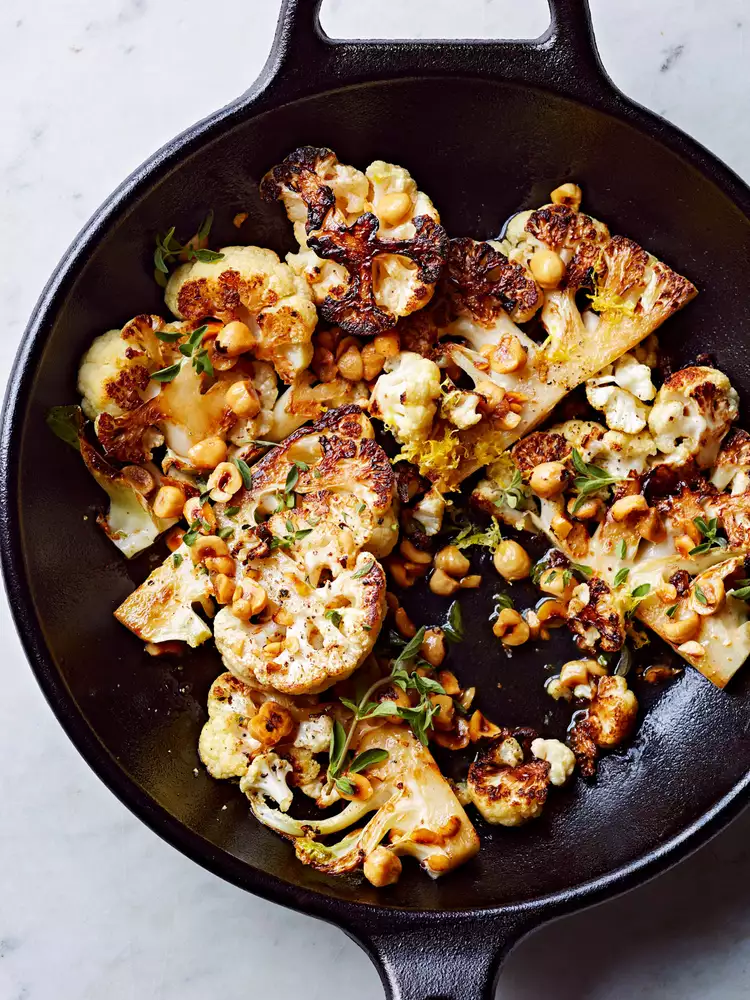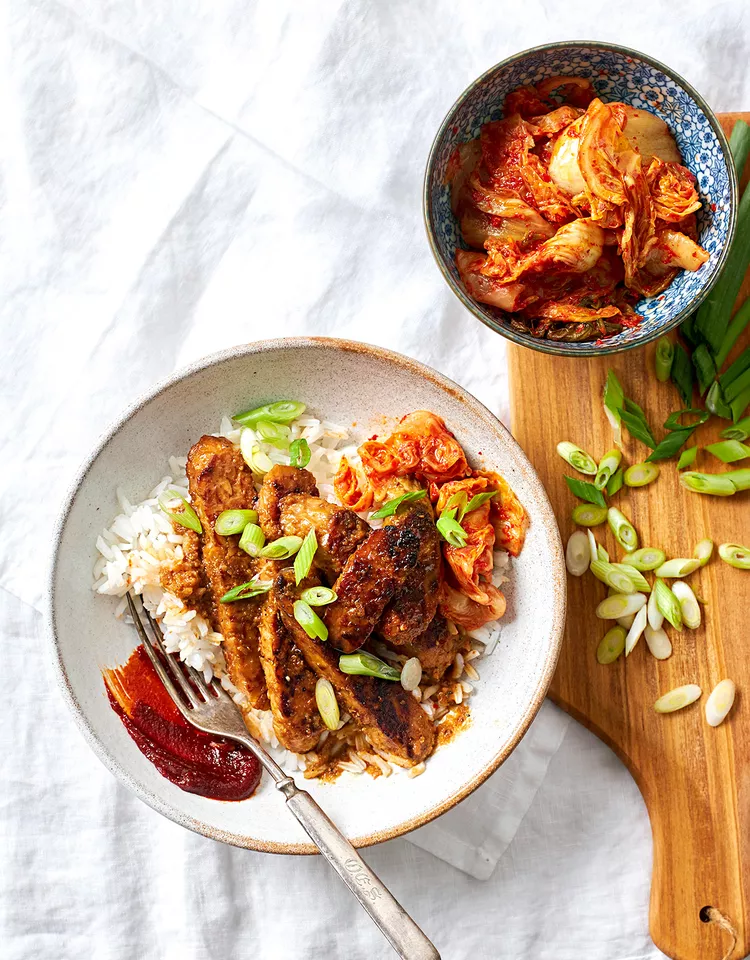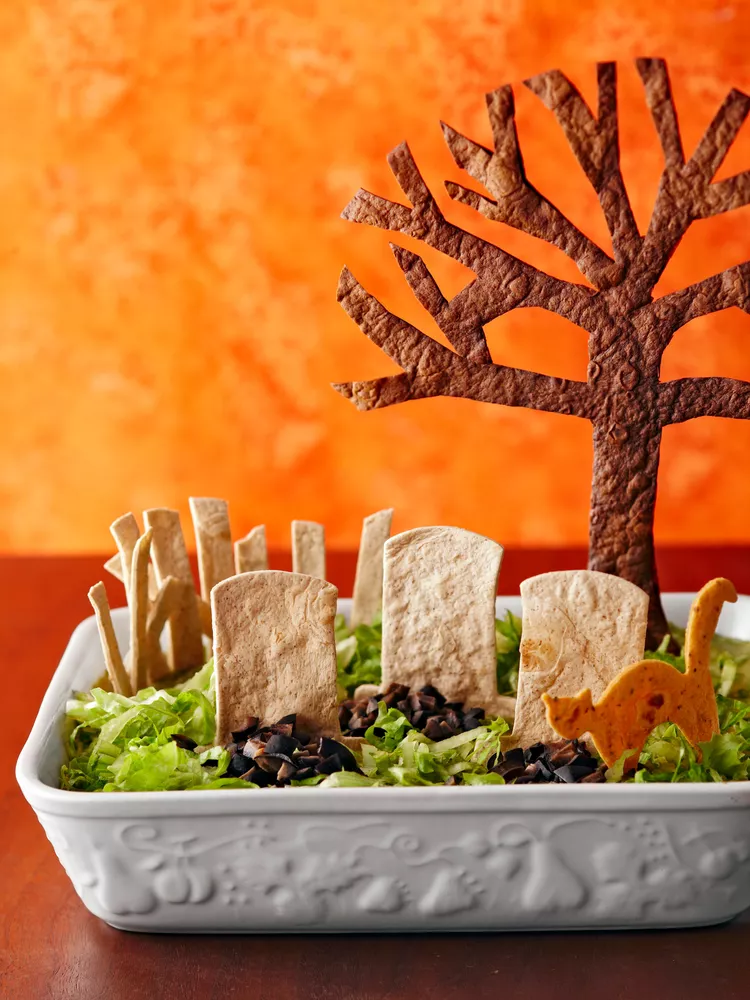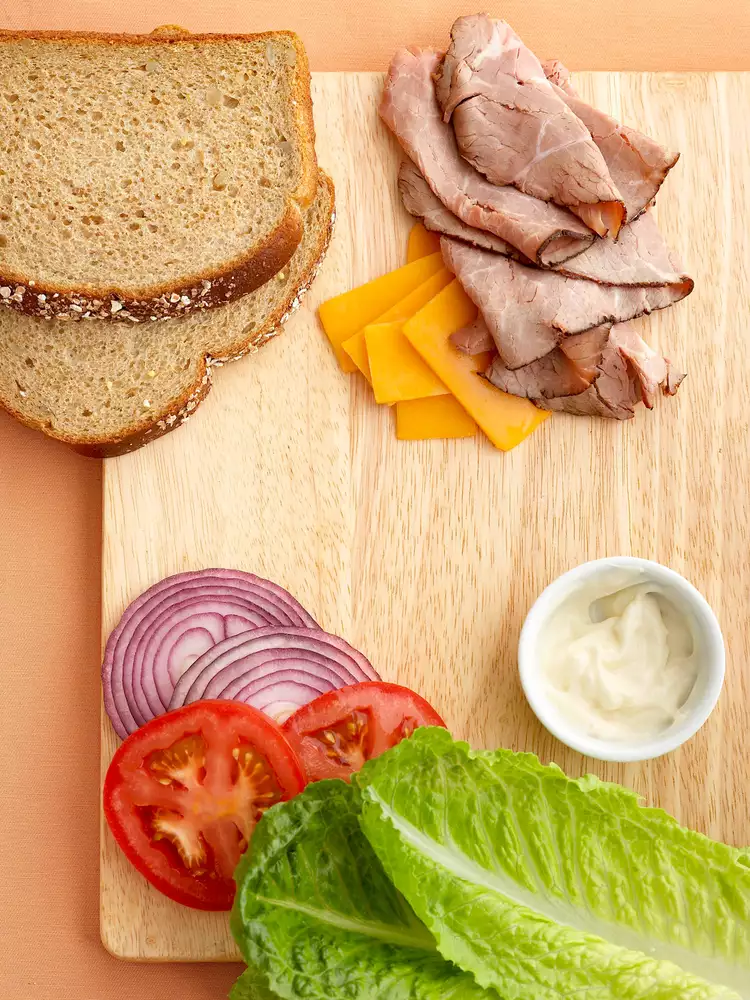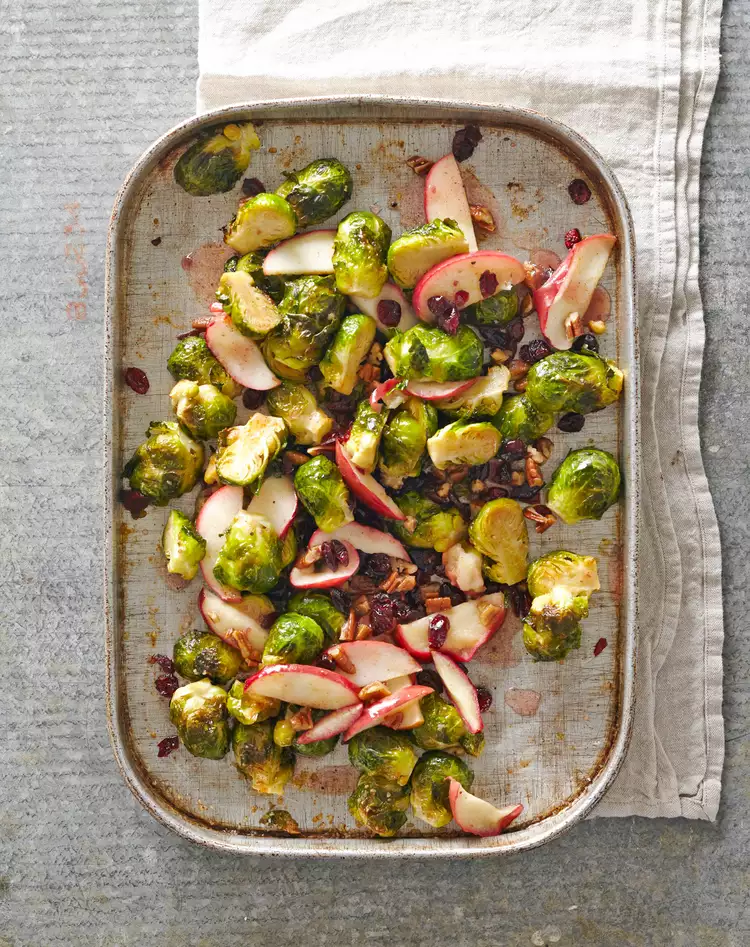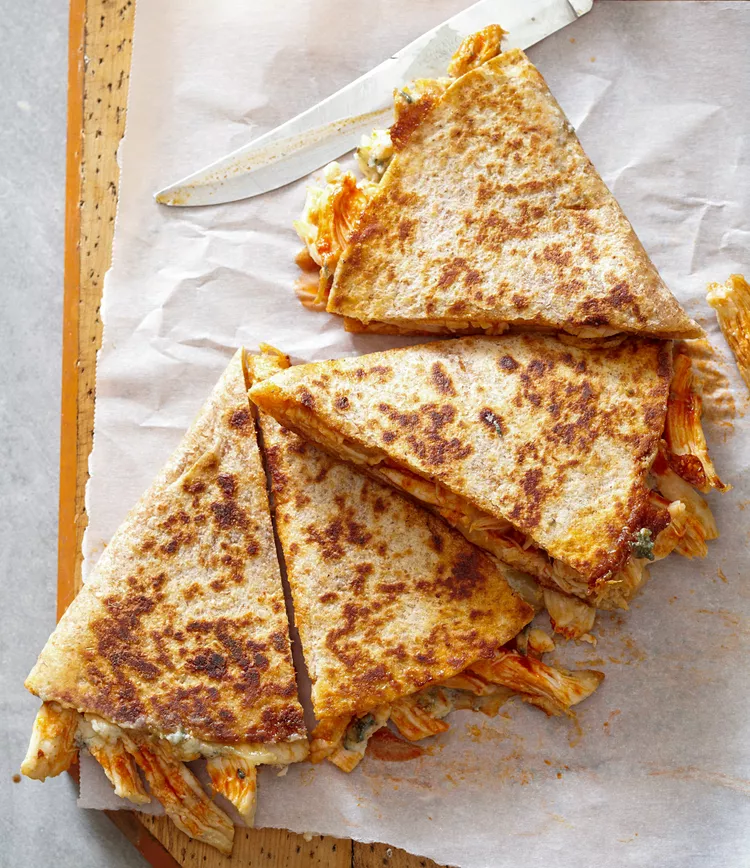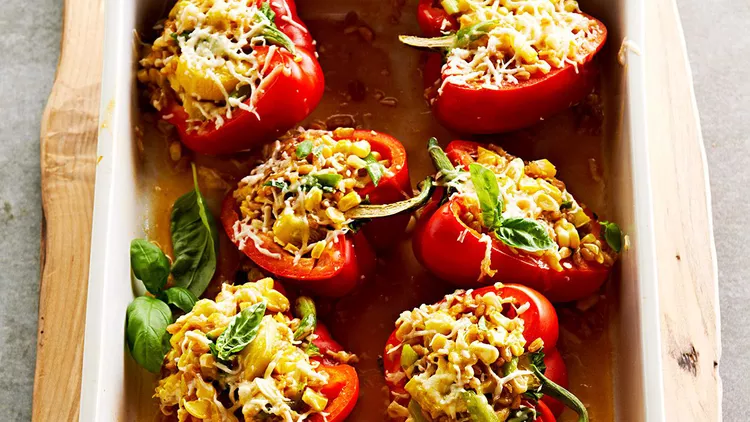Korean cuisine has a wide and colorful palette of ingredients and flavors that may share some overlap with the countries that neighbor it, but has its own distinct identity. For instance, while rice wasn’t the first staple crop of the culture (that title belongs to millet), it’s now the favorite. But what is done with it is entirely its own. Fried rice gets a kick as kimchi fried rice; the grains get crisped in a bibimbap; rice cakes get drenched in sauce as tteokbokki. Vegetables are another major building block of Korean food, but they get a unique and fermented treatment, from soybeans to chilis to vinegars, or are served raw and dressed with sauces, sesame oil, and more. The good news is that making Korean-inspired dishes at home means you can customize your cooking to fit any lifestyle choice! Here are our best recipes that will allow you to get acquainted, experienced, and fall deeper in love with Korean food.
Kimchi
First things first, for a proper Korean meal, you'd better have some kimchi at the ready. It’s served at nearly every meal and adds vibrant color and big flavor to literally anything you’re eating. Make your own to watch fermentation magic happen right before your eyes.
Cucumber Kimchi
If cabbage isn’t your bag, try cucumbers on for size with this Persian cuke version of a Korean staple. It only takes minutes to set up and just 12 hours to ferment, and it doesn’t require pressing like the traditional method. An occasional stir is all you need to do before you chill and eat.
Korean Tofu and Kimchi Mandu
Who doesn’t love a good dumpling? According to recipes from around the world, the answer is nobody. This follows for Korean food, too, where they call them mandu and stuff them with any manner of delicious fillings. This vegan recipe has a full step-by-step visual tutorial to help you master the style.
Korean Fried Chicken
Beyond marinade flavors, it’s very different from the cornmeal- or thick flour-dredged American Southern staples. Korean fried chicken known for having a super-thin crust that’s sharply ultra-crispy, which this recipe achieves with an air fryer.
Japchae (Korean Stir-Fried Glass Noodles)
This is always an exciting banchan (or, shared side dish) to see at Korean BBQ spots, since it’s not always guaranteed to make an appearance. You’ll recognize it from the sauce-slicked, chewy, clear noodles, which is what gives them their nickname of glass noodles. Most comprised of sweet potato starch, they can also be made with other plant bases as well. The veggies in it can also be chef’s choice, making it a great way to get rid of straggling fridge scraps.
Korean-Style Short Ribs
Short ribs are a cut of beef truly perfected by Korean cuisine. As all short ribs are, galbi is a labor of love that requires time—typically for marinating, then hands-on grilling. However, a slow cooker makes it so that you can basically marinate it as it cooks in a sweet soy-based sauce. Using a pressure cooker gives you back hours of anticipation, infusing the beef with flavor in just 30 minutes after searing.
Korean Bibimbap
One of the most iconic dishes of Korean cuisine, it’s as fun to eat as it is to say. This rice bowl contains such a diversity of vegetables, texture, and flavors offering depth and variety in every bite. Don’t be daunted by the size of the ingredient list—there are far fewer steps to making this than there are components!
One-Pot Bibimbap-Style Rice
You can also simplify this dish and save yourself some dishes by sticking to one (non-stick) pot. After all, you’re going to mix it up anyway, even if you serve it deconstructed as it traditionally is! This recipe also gives you the option of omission, listing only the most essential vegetables. But don’t skip the fried egg—few things aren’t better with one tossed on top.
Bibimbap Casserole with Tofu
Hands-off and meat-free, this baked preparation offers yet one more way to experience the fun of bibimbap. Granted, you’ll need more than the one pan since some ingredients do better with a little browning or wilting, but the end result is family-style table-ready. Eggs and honey keep it from being vegan, but lacto-ovo vegetarians remain in luck.
Korean-Style Chili-Garlic Chicken Stir-Fry
Bibimbap may be one of Korean food’s most mainstream stars, but Korean chefs wow with woks, too. This dietitian-developed recipe makes it easy to literally stir things up Korean-style, using chili, garlic, ginger, sesame oil, and plenty of vegetables—both cooked and quick-pickled—to add color and crunch.
Korean Fire Chicken with Cheese
Unique to Korean cuisine among Asian cuisines is a love for cheese. In fact, consumption of cheese in Korea has actually doubled over the past ten years. So go ahead and cool down the peppers in this recipe with plenty of mozzarella cheese. No one will judge you for it.
Korean Beef Cabbage Wraps
Pre-packaged broccoli slaw mix and ground beef make this low-carb, high protein meal or snack easy peasy, with only three steps and 20 minutes required to get you from prep to plate. The ruffly leaves of the napa or savoy cabbage recommended make for a striking presentation, but as with all cabbage, make sure to trim off the bitter ends of the center stem.
Korean Barbecued Pork
Beef is a big deal in Korean cuisine but pork predates it as a primary protein. It’s less costly and just as delicious when enhanced with the sweetness of brown sugar, hoisin sauce, and Asian pear or apple. The recipe calls for only a small amount of sriracha, but we like to dredge to taste after cooking.
Korean-Style Steak and Noodles with Kimchi
Rice is a staple food and noodles made from the grain are perfect in stir-fry recipes like this one, but it’s not the only carb form for Korean food. This low-calorie per serving recipe also gives you the options of soba or cellophane noodles, all of which play well with shiitake mushrooms, carrots, baby spinach, kimchi, and flank or skirt steak.
Spicy Tempeh Bulgogi
Bulgogi is often followed by “beef,” but it doesn’t have to be. This recipe uses tempeh, which is made of pressed fermented soybeans (and sometimes grains, depending on the type you choose), to give you a chewy, full-bodied feel and texture that satisfies. Pureed pear in the marinade is one of the secret ingredients that make this dish delightful.
Korean Chicken Tacos
Make a favorite something fusion with this easy global hybrid! Skip the rice and go for a corn tortilla or trade shredded lettuce or cabbage for some homemade kimchi. However you want to flip the script in your mind, just know it’ll be a winning one as beloved flavors from two dynamic cuisines mesh in delicious harmony.
Spicy Kimchi Burger
It’s easy to add a little Korean flair to your cookout; kimchi’s versatility is exactly why it’s found at nearly every Korean meal. Salty fish sauce adds a wallop of umami that amplifies ground beef, and a bonus recipe for sesame scallion mayonnaise will have you tempted to put this discovery on everything.
Mozzarella-Stuffed Kimchi Meatballs
If you really want to surprise and delight, throw taste buds for a loop with this thoroughly unexpected mash-up of Korean and Italian flavors. Kimchi brine, fish sauce, and gochujang kick up tomato sauce. Long rice noodles complete the twist on traditional spaghetti and meatballs.
